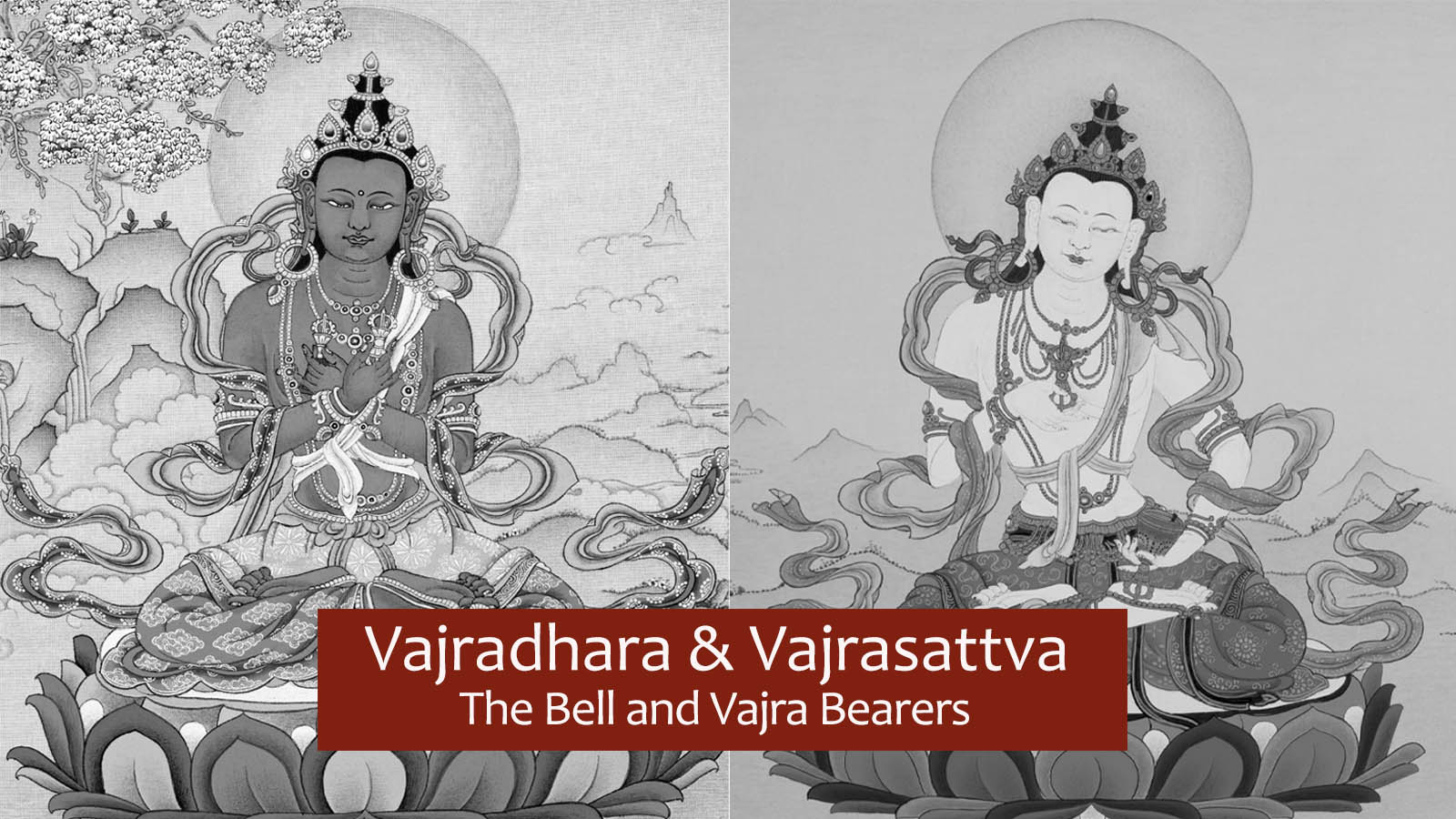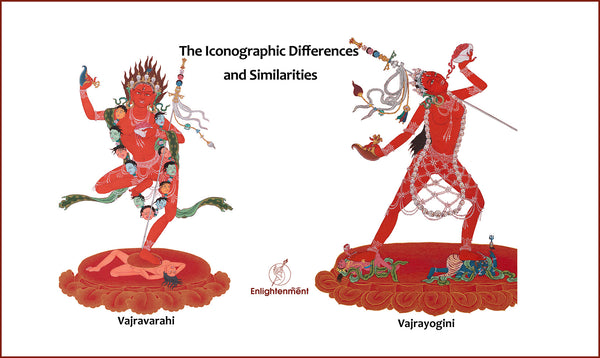Introduction to Vajrasattva and Vajradhara:
Vajradhara is the ultimate Primordial Buddha or Adi Buddha. Vajradhara is the name of Sakyamuni's Tantric incarnation. Tantras are scriptures that are unique to Tantrism and are thought to have been first transmitted by Vajradhara. In both his single and Yab yum forms (the one with consort), he is a manifestation of Buddhahood itself.
Likewise Vajrasattva is the manifestation of Vajradhara. The diamond or adamantine entity, is the primary deity used by tantric practitioners at all levels for purification. His function as the "great purifier" in Tibetan Buddhism is top-of-mind; it is a crucial initial step in Buddhist practice, removing the barriers and bad karma that hide our Buddha's Nature. It is one of the fundamental or the foundational Vajrayana techniques.
Vajradhara as Dharmakaya Buddha:
He is the Dharmakaya Buddha, is the primordial Buddha representing the essence of the historical Buddha's realization of enlightenment. "Vajradhara" translates to the 'Bearer of the thunderbolt' which means that he is the guardian or protector of Vajrayana Buddhism.
It is stated that the mystic word AUM manifested when everything was utterly void (Maha-shunyata), from which the Adi-Buddha, at his own will, was born. In a spiritual sense, the Five Dhyani or Transcendent Buddhas emerge from the Adi-Buddha's state of meditation, and Bodhisattvas arise from Dhyani Buddhas. It is believed that when the universe was created, he revealed himself in the shape of a flame that sprang from a lotus flower.
Vajradhara Mantra: Om Ah Vajradhara Hum
Vajrasattva as The Great Purifier:
Like other Buddhist deities, Vajrasattva opposes the concept of ego. As a result, neither "who" nor "what" exists. One may argue that Vajrasattva, when seen as a pure Buddha, is none other than ourselves. He is sometimes referred to as an emanation of Samantabhadra, Vajradhara, or Akshobya. One may argue that, in the end, Vajrasattva is identical to every other Buddha. However, Vajrasattva can be characterized as a kind and caring deity. While each of these statements is accurate in its own right, none of them genuinely defines Vajrasattva.
Buddhists have long considered Vajrasattva to be an effective practice for cleansing mind. The practice of Vajrasattva is regarded as the most powerful healing and purification technique in Vajrayana Buddhism. He is frequently the first deity most students worship. Many Tibetan Buddhist schools mandate that students complete 100,000 Vajrasattva mantras as part of their foundational training. Vajrasattva integrates speech, body, and mind meditation. Visualizing the deity, the idealized embodiment of an Enlightened person, engages our intellect.
Vajrasattva meditation is therefore strongly advised for everyone looking to raise their spiritual level. Purifying the same is necessary for brighter days ahead because it is said that our past and present Karma heavily influences how our present and future lives will turn out.
Vajrasattva Mantra: Om Vajrasattva Hum
Iconography As Depicted in Thangka:
Vajradhara Attributes:
Vajradhara is often depicted in dark blue color. This signifies the historical realization of enlightenment. He is portrayed seated atop a moon disc lotus seat cross-legged in a vajraparyaṅka pose having two arms crossed over his heart in the Vajrahūṃkara or the union gesture.
His right hand carrying the vajra is above the left to represent the skillful technique and compassion. His left hand holds a bell (signifying his inner wisdom and emptiness). He is adorned with the eight jewel decorations and five silks characteristic of a Bodhisattva. 
Click here to view our Vajradhara Thangka Painting
Vajrasattva Attributes:
He is pristine white in color. He belongs to the Aksobhya Vajra family, which also contains Vajrapani. He is generally depicted as a youthful, calm who is dressed in all the silks and jewels that a wealthy prince would wear.
In his right hand, he gently holds a vajra at his heart. He has a bell around his waist, held in his left hand. The bell stands for Wisdom, while the vajra signifies Reality and Compassion. He carries the bell of knowledge in his left hand and a vajra, which represents a technique, in his right hand, just like Vajradhara, of whom he is an emanation.
Vajrasattva is sometimes shown seated with one leg slightly extended.
Click here to view our high quality Vajrasattva Thangka Painting
Distinguishing between Vajradhara and Vajrasattva
Both Vajradhara and Vajrasattva are depicted as seated calmly atop a moon disc on a lotus seat with crossed leg posture. Both deities are adorned with 5 jeweled crowns of gold, a silk scarf, and different body ornaments such as necklaces, earrings, bracelets, anklets, and a girdle. They are portrayed holding a vajra scepter in their right hand and a vajra-handled bell in the left. The flowing robes, beautiful silken garments, and the light crimson halo that illuminates their faces make the thangka art look mesmerizing.
One primary difference between them is their body colors. Vajradhara is depicted as having a dark blue body in thangka while Vajrasattva is depicted in radiant white color.
Both of them holds Vajra and bell in their right and left hand respectively but the major difference is on their hand gesture.



3 comments
Susan Salveson
Thank you – very helpful comparison. I identified the figure on a disk that I gifted my teachers many years ago.
Maria Arroyo-Segovia
Very clarifying. Thank you so much.
Matthew Thomas
Thank you so very much for your explanation of the Vajara.. it help me to unstated personal experience..thank you .